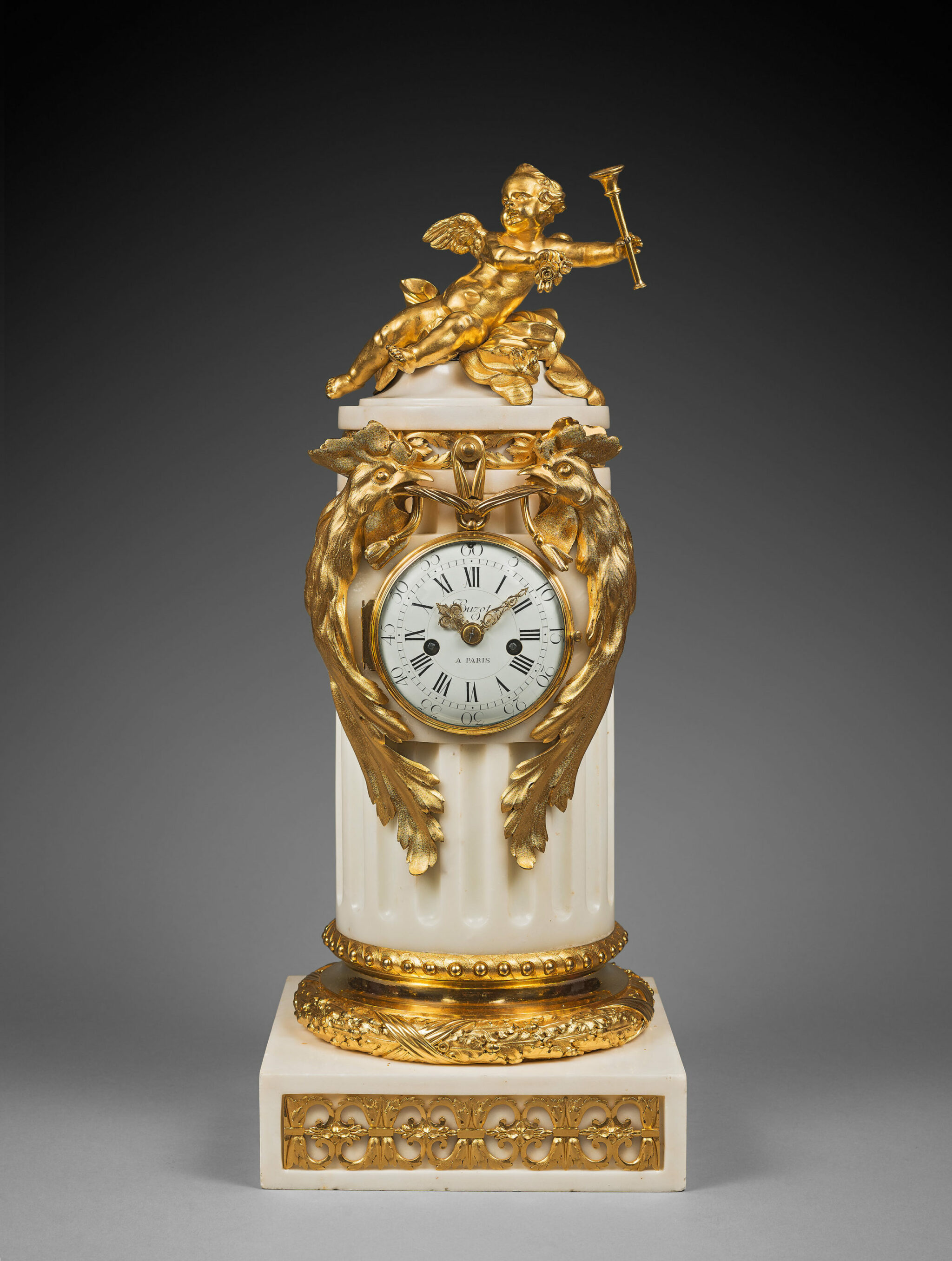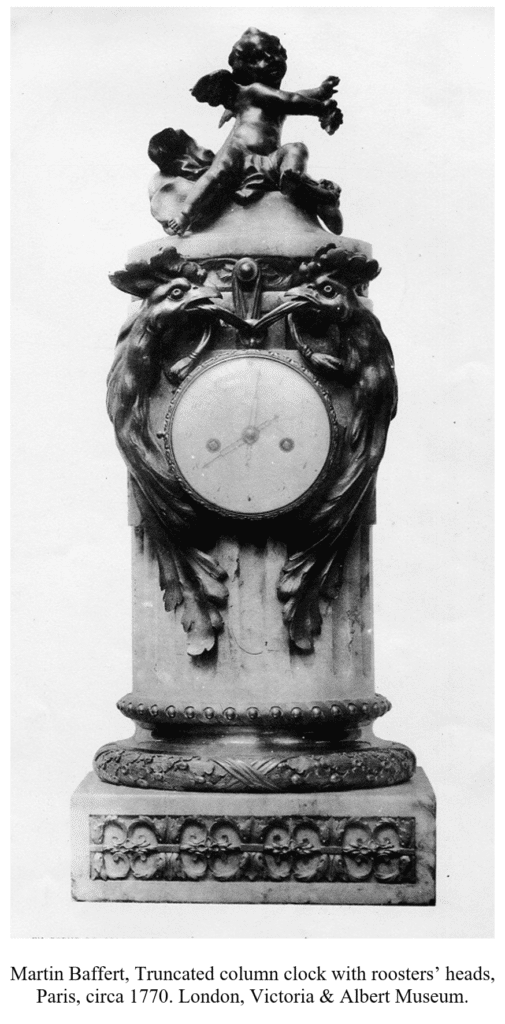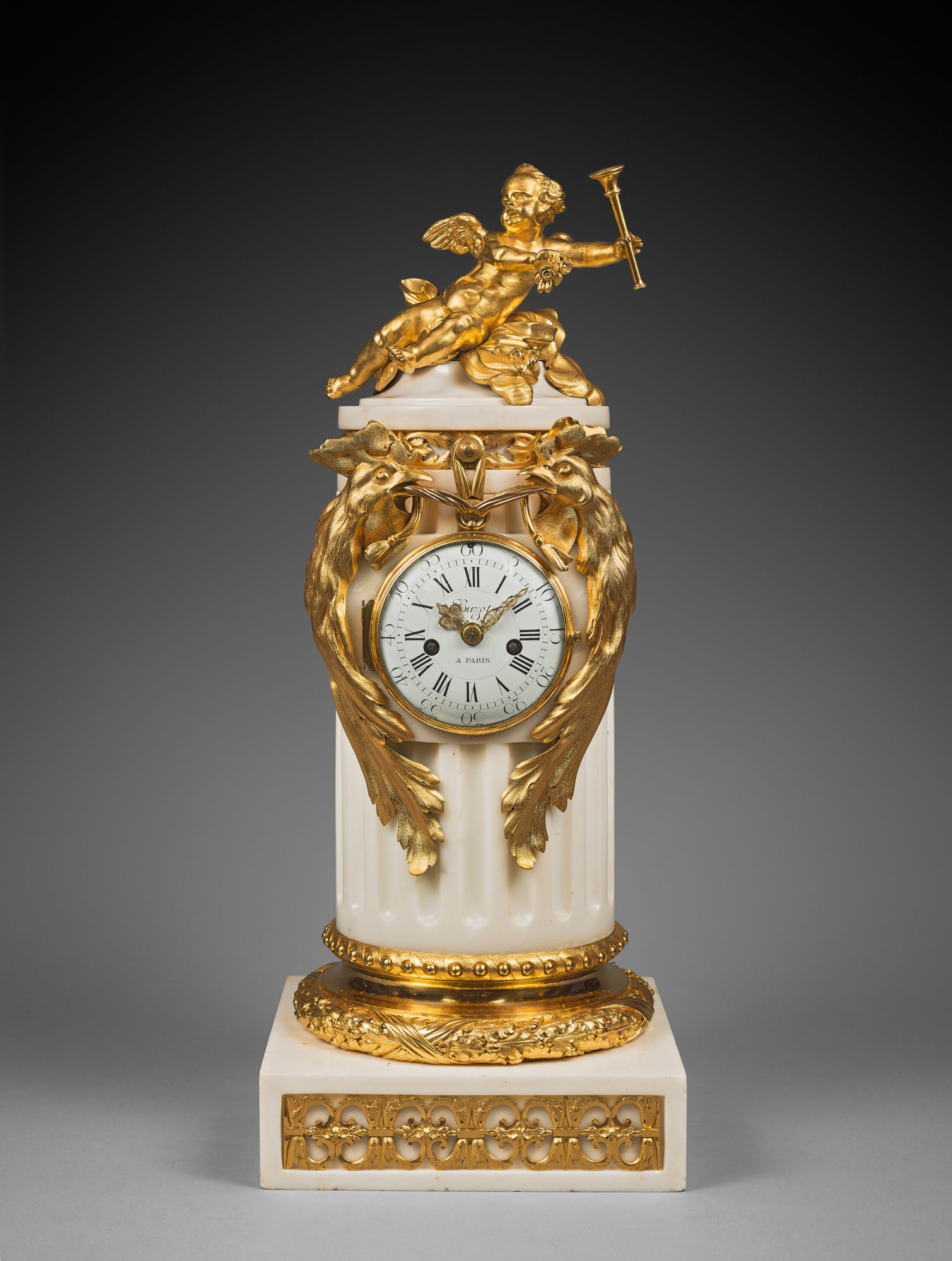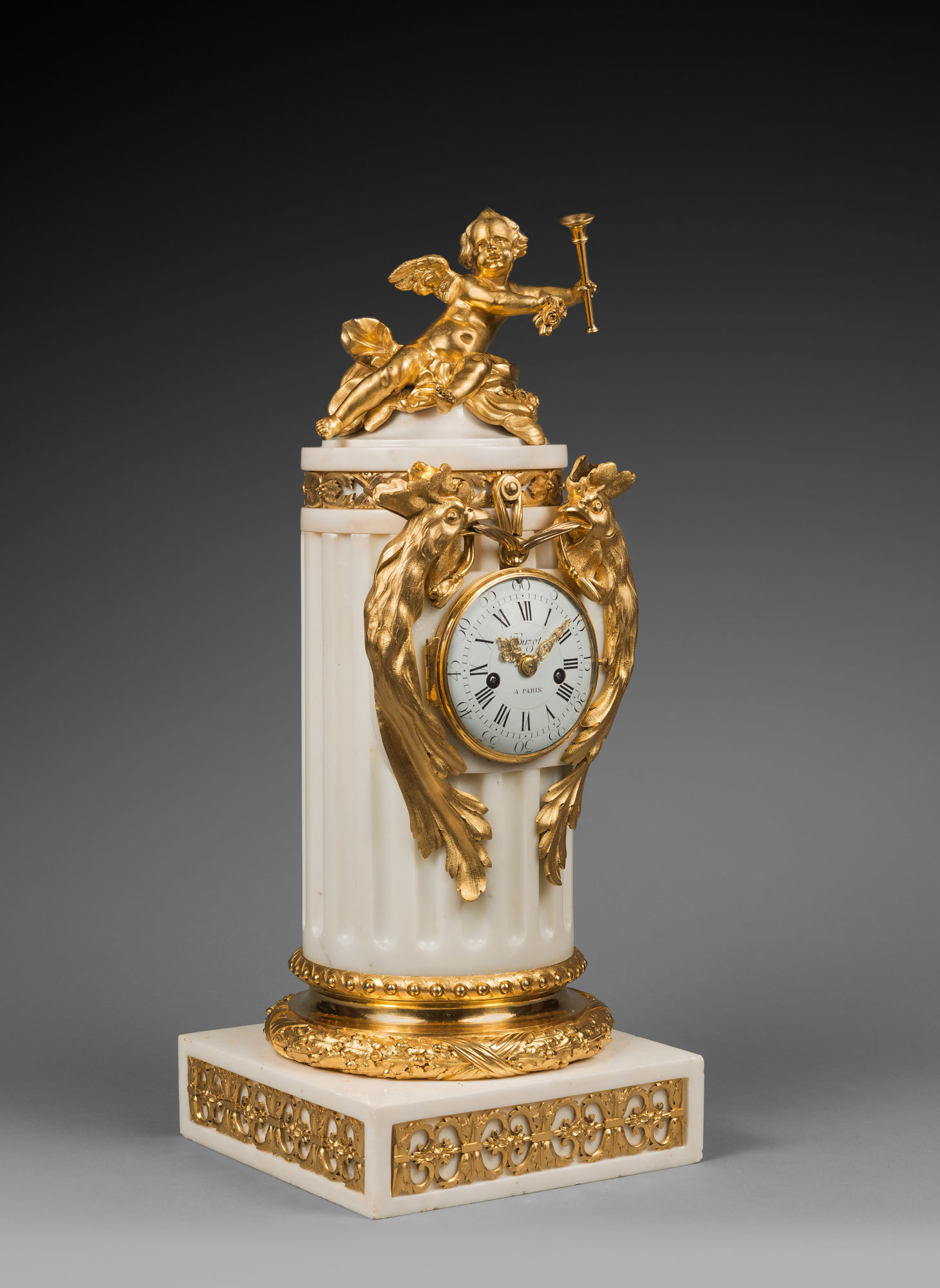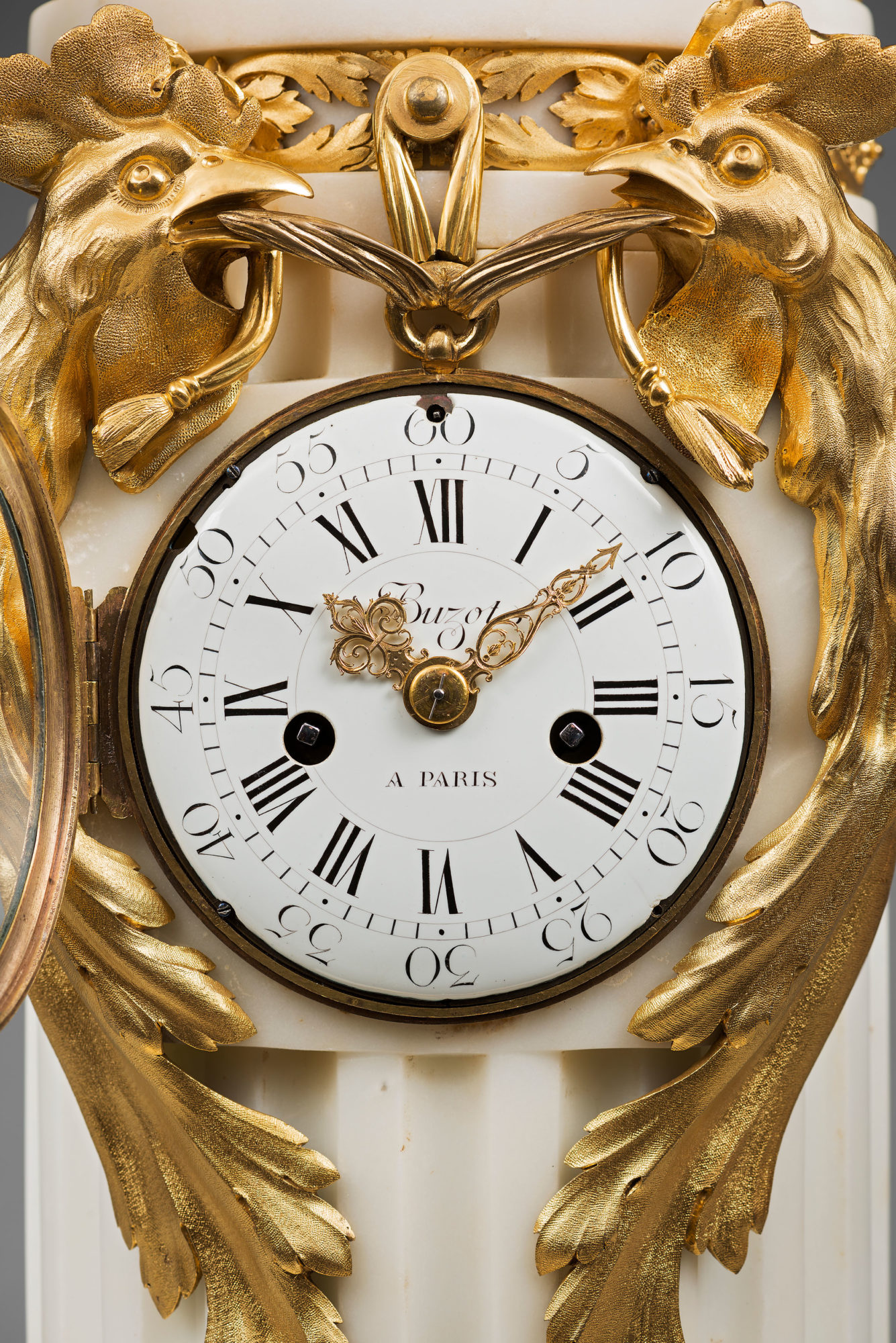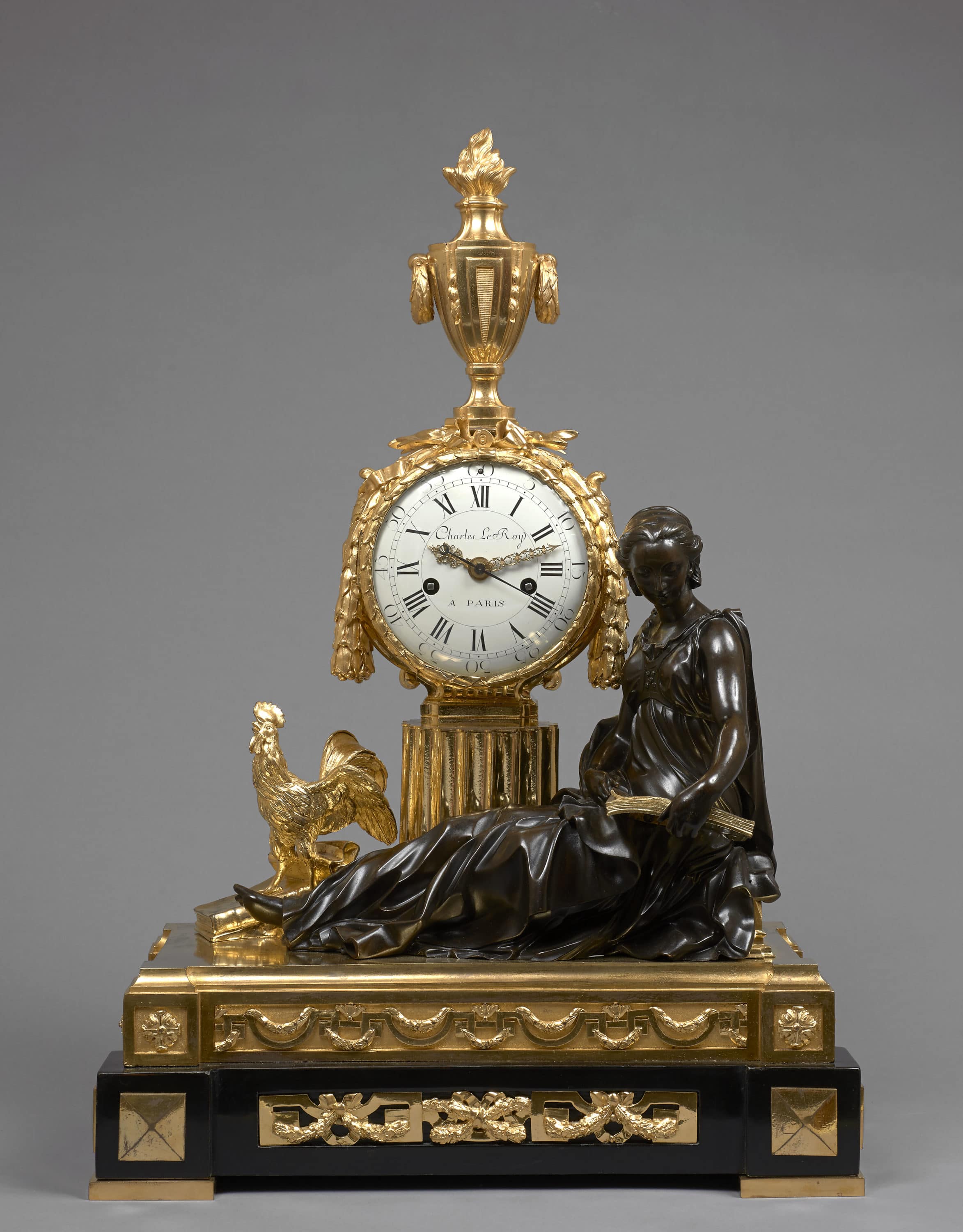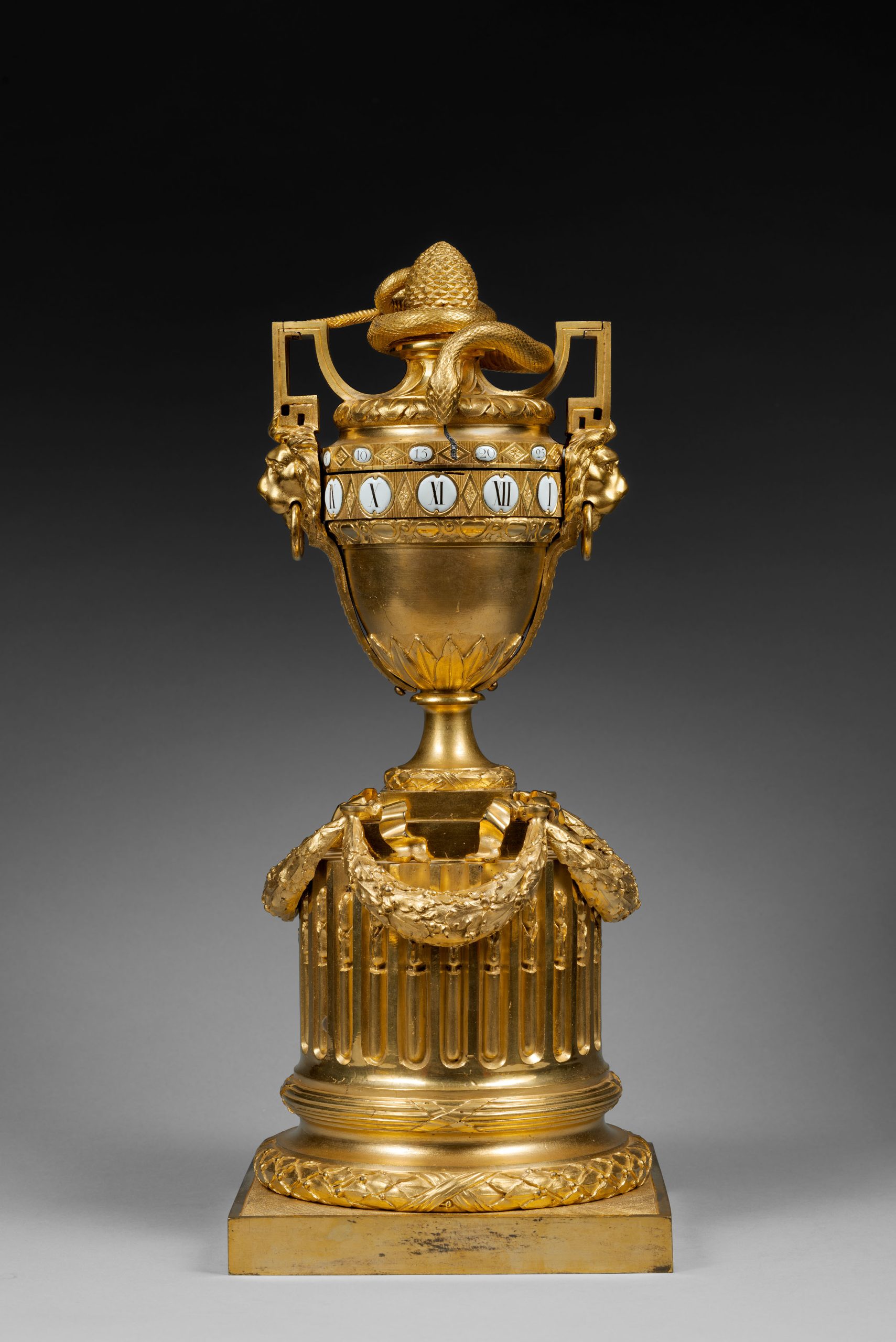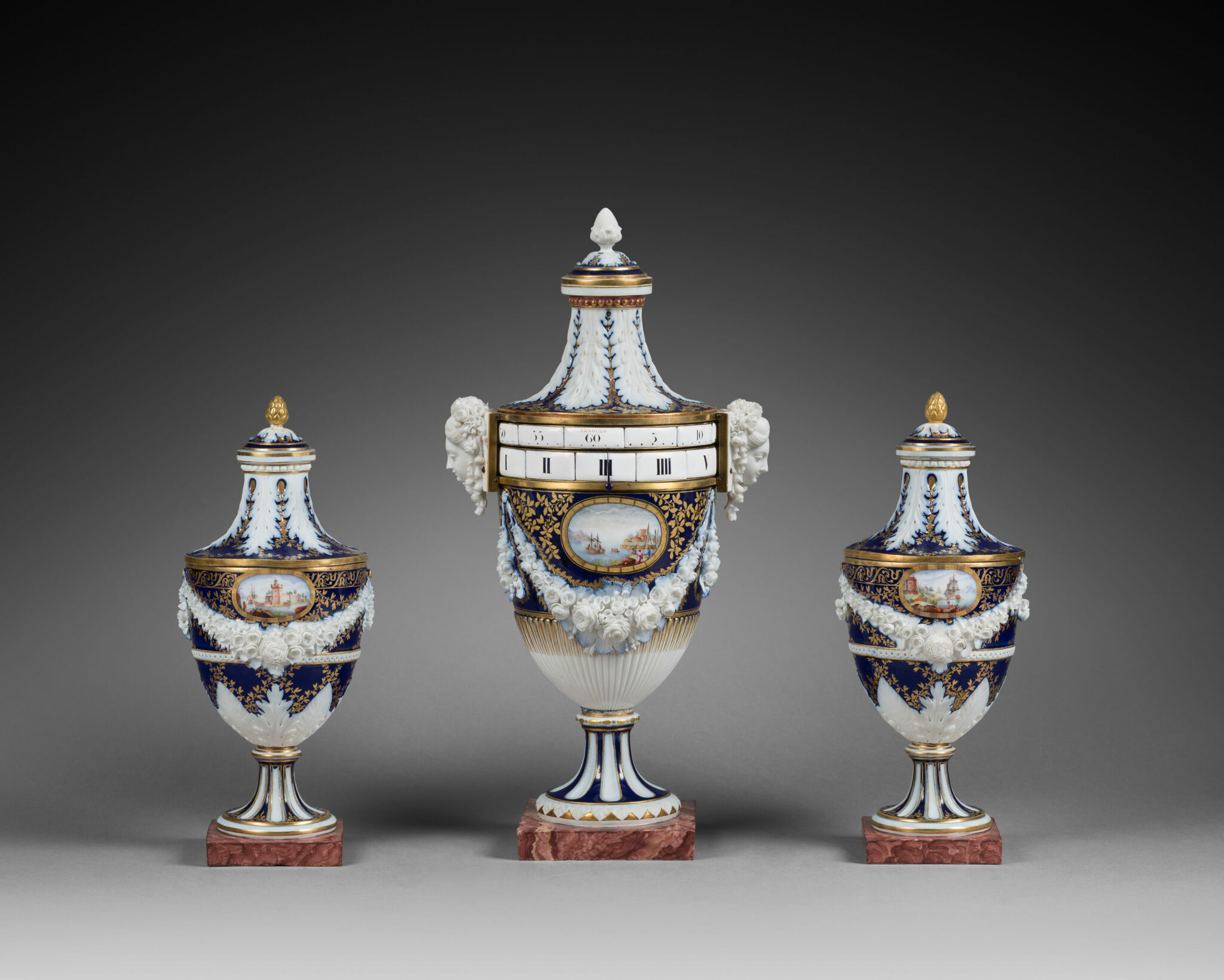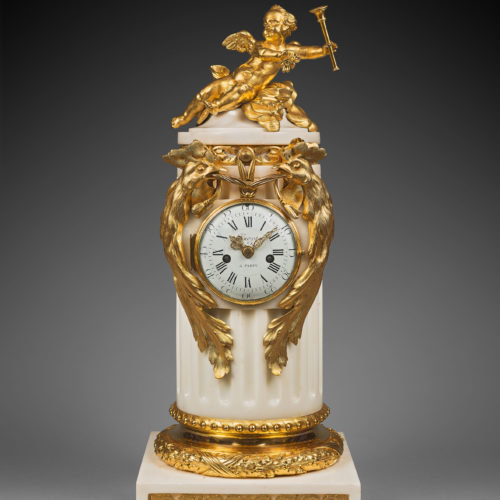Important Mantel Clock in the Form of a Truncated Column made of Matte and Burnished Gilt Bronze and White Carrara Marble
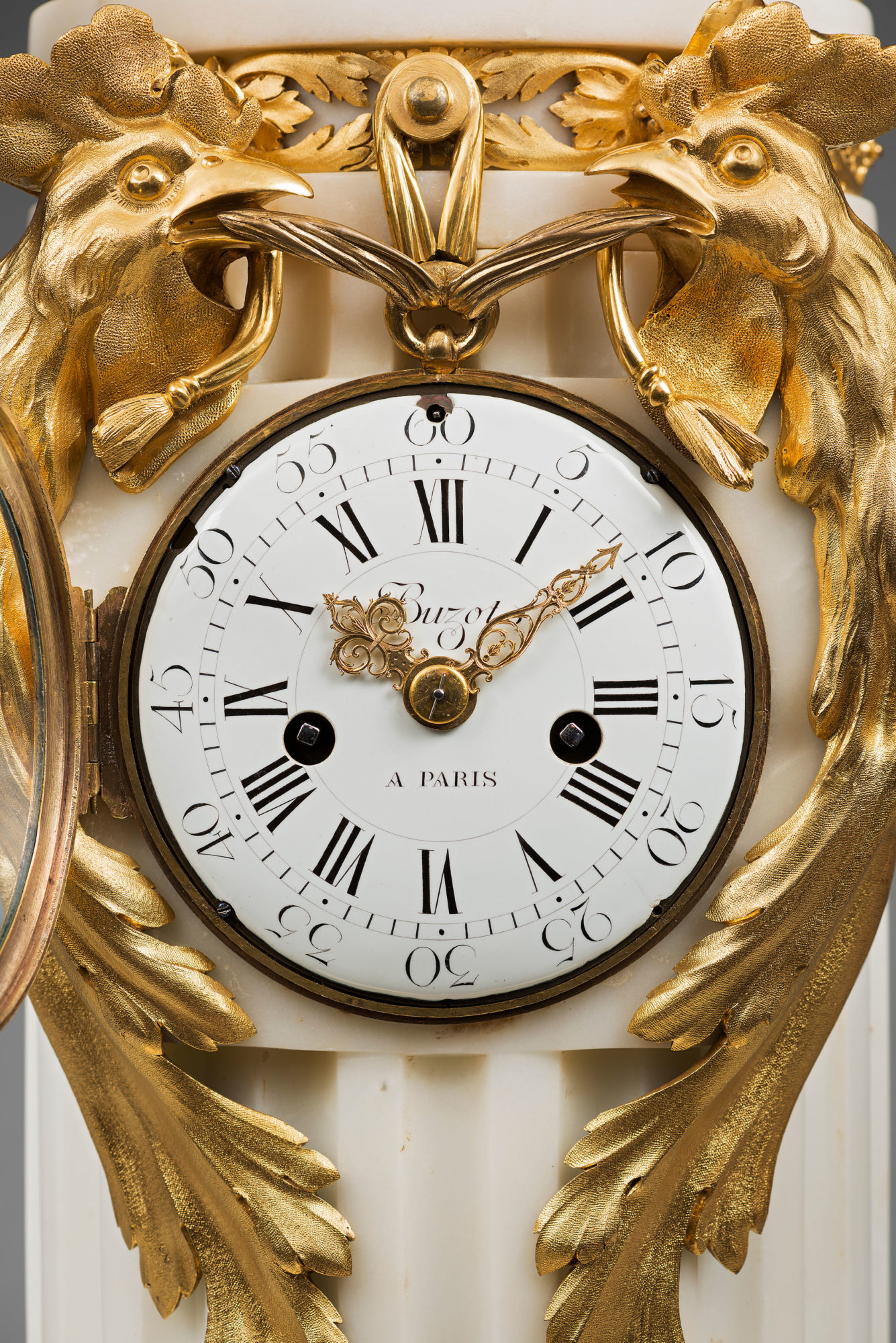
The bronze mounts attributed to Philippe Caffieri
Paris, early Louis XVI period, circa 1775
The round white enamel dial, signed “Buzot à Paris”, indicates the Roman numeral hours and the Arabic numeral five-minute intervals by means of two pierced and gilt bronze hands. The hour and half hour striking movement is housed in a magnificent neoclassical case made entirely of finely chased matte and burnished gilt bronze and white statuary Carrara marble. The bezel is framed by two wide acanthus leaf scrolls that terminate in rooster’s heads that hold in their beaks a ribbon that passes through a ring and is looped around a roundel placed within a pierced frieze of scrolling leaves. The clock is surmounted by a putto seated among clouds, who holds roses in one hand and a trumpet in the other; this is an allegory of Fame and Love. The clock case takes the form of a truncated fluted column that is set on a base decorated with an interlace frieze with cabochons and a ribbon-tied laurel leaf torus. The quadrangular base has panels with reserves that are adorned with pierced friezes of scrolling leaves alternating with foliage, C-scrolls and flowers.
Discover our entire collection of antique mantel clocks for sale online or at the gallery.
La Pendulerie is the specialist in fine and rare antique clocks, based in Paris.
The unusual design of the present truncated column-form clock, and particularly the two rooster’s heads that frame the dial, was inspired by a horological model created by André-Charles Boulle during the reign of Louis XIV. Boulle also used this motif on an important longcase clock on which two roosters’ heads frame the bezel (see P. Kjellberg, Encyclopédie de la pendule française du Moyen Age à nos jours, Les éditions de l’Amateur, Paris, 1997, p. 65). Later the same motif, which symbolizes Dawn, also appeared in clock designs in the albums of Parisian designers, including a plate showing cartel designs, done by Jean-François Forty; it is shown in Tardy, La pendule française, 2ème Partie: Du Louis XVI à nos jours, Paris, 1975, p. 307. That design might have been the inspiration for a vase-form clock made of Chinese porcelain and chased and gilt bronze, whose dial is signed “Mabille à Paris”, and which was successively part of the Bensimon, Roberto Polo and Djahanguir Riahi collections (sold Christie’s, New York, November 2, 2000).
To the best of our knowledge, only two other identical clocks are known, however in these two examples the column is made of alabaster, a material that is less precious and costly than white Carrara marble. The first model, whose dial is signed by the clockmaker Martin Baffert and whose counter enamel is signed by the enameler Antoine-Nicolas Martinière, was in the collection of businessman John Jones during the 19th century. Bequeathed to the South Kensington Museum, it is today in the Victoria & Albert Museum in London (illustrated in O. Bracket, Catalogue of the Jones Collection, Part II, 1924, n° 257, p. 66, plate 59). The second, whose dial is also signed “Buzot à Paris”, was formerly in the collection of the 6th Earl of Rosebery in Mentmore Castle (sold Sotheby’s, London, in May 1977) and might be the piece described as “an alabaster clock with striking, the name Buzot on the alabaster plinth with ormolu gilt bronze mounts” that was estimated at 168 livres in the probate inventory of an important Parisian collector in the late 1770s.
Joseph Buzot, known as Buzot the elder, was one of the most important Parisian clockmakers of the second half of the 18th century. After becoming a master on August 21, 1770, he first opened a workshop in the Quai des Grands Augustins, then in the rue des Fossés Montmartre in 1772 and the rue des Petits Carreaux shortly before the Revolution. During the 18th century, some of his pieces were mentioned as being in the homes of important contemporary collectors. After the Revolution, a mantel garniture was returned to the heirs of the collector Nicolai; it was made of blue Chinese porcelain with finely chased gilt bronze mounts; its central piece was a clock.
Philippe Caffieri (1714 - 1774)
Philippe Caffieri was no doubt the most important Parisian bronze caster of the late 18th century. The brother of sculptor Jean-Jacques Caffieri (1725-1792) and the son of Jacques Caffieri (1678-1755), “Sculpteur et ciseleur ordinaire du Roi”, in 1747 he went into partnership with his father. He became a master sculptor in January 1754 and a member of the Académie de Saint-Luc.
Upon the death of his father the following year, he took over the family workshop in the rue Princesse, purchasing his brother’s share of the workshop’s rococo models. Several months later, as a master’s son, he became a master caster “en terre et sable”. Initially he continued in the rococo style his father had favored, but later developed new models in the neoclassical style. He worked on the first example of an antique-inspired piece of furniture that was commissioned by the wealthy financier Ange-Laurent Lalive de Jully. Throughout his career, Philippe Caffieri worked for the most important Parisian collectors of the time.
